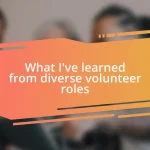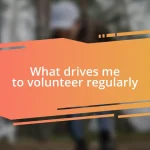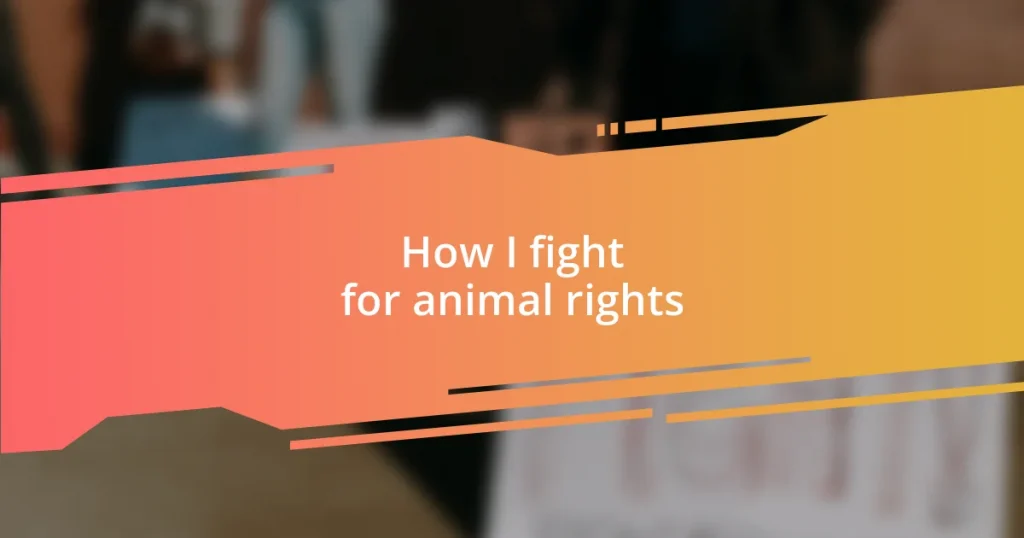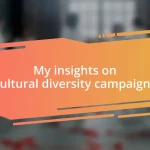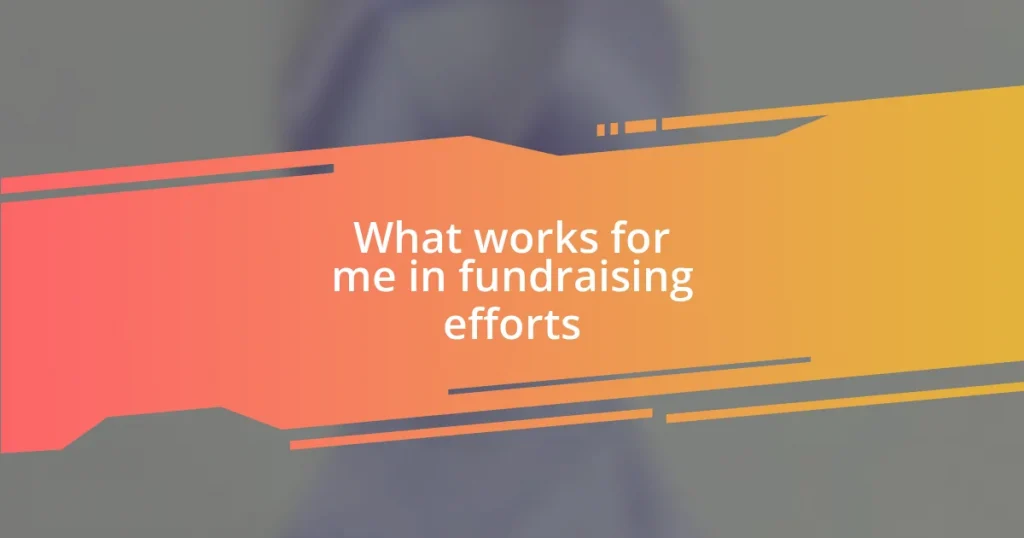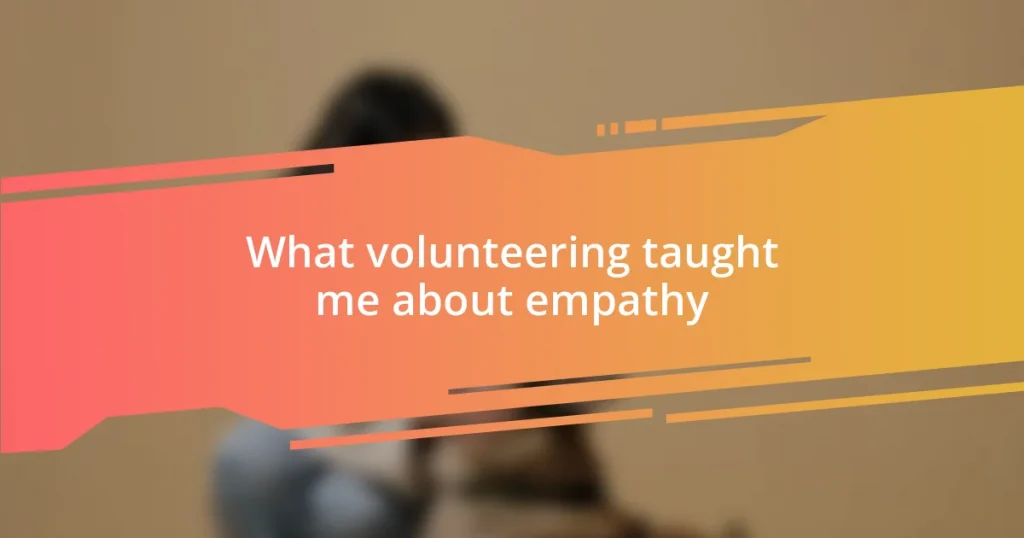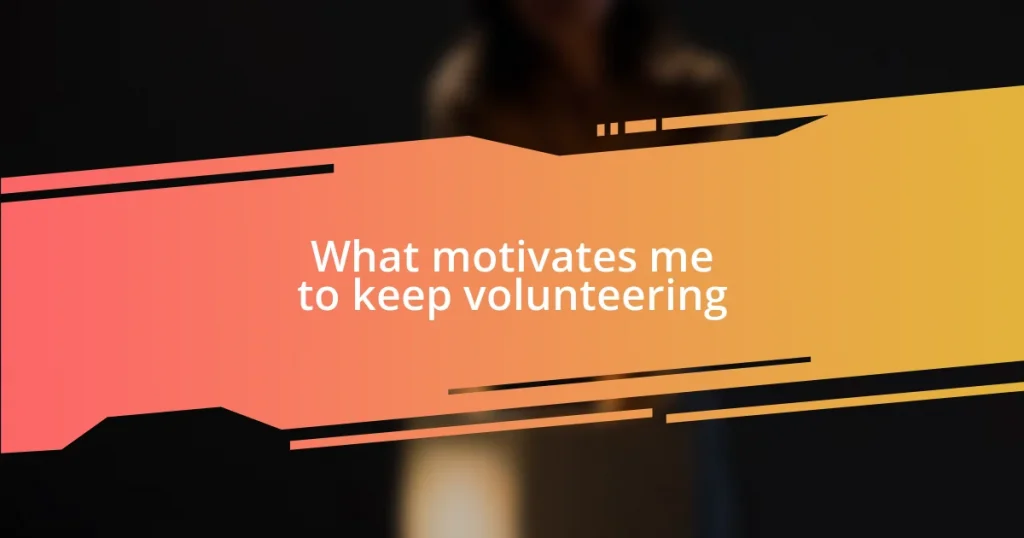Key takeaways:
- The author’s personal experiences with animals, such as rescuing a stray dog, ignite a deep passion for advocating animal rights against injustices like factory farming and animal testing.
- Grassroots activism plays a vital role, demonstrated through community events and peaceful protests that foster unity and lead to tangible changes in animal welfare practices.
- Building coalitions with other advocacy groups and leveraging social media are essential strategies for raising awareness and driving collective action in the fight for animal rights.
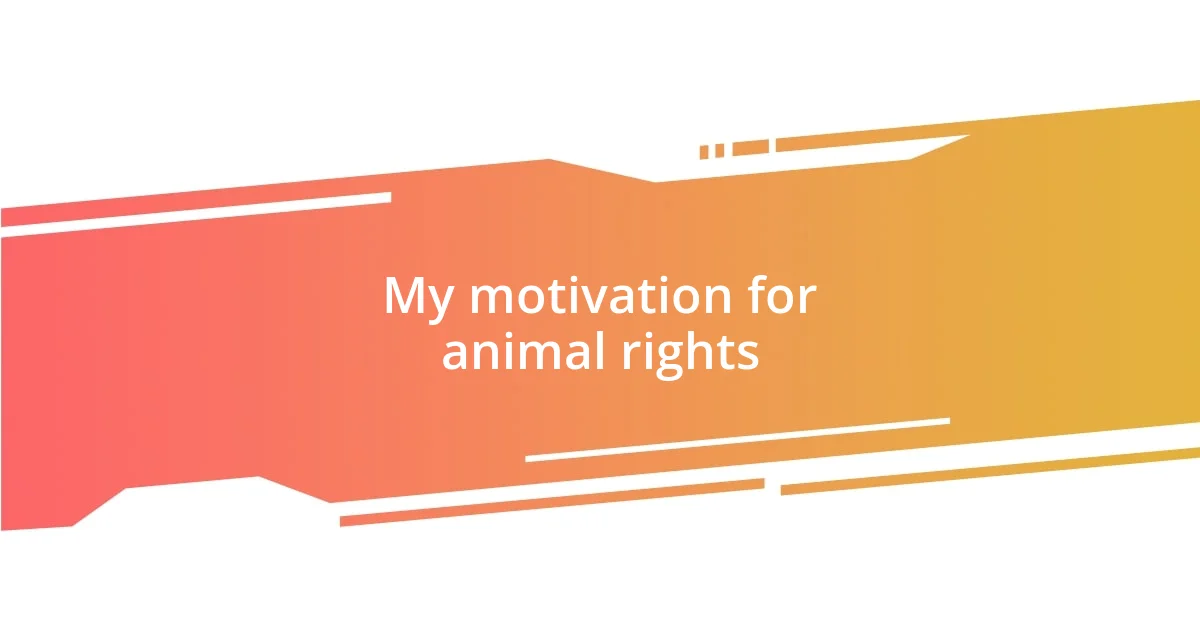
My motivation for animal rights
Growing up, I always had a soft spot for animals. I remember the first time I rescued a stray dog in my neighborhood. Watching her wag her tail gratefully reminded me just how much love and companionship animals offer, making it hard for me to accept the pain they suffer through in various industries.
My motivation for fighting for animal rights stems from the overwhelming injustice I see every day. It makes me question: how can we turn a blind eye to their suffering? Each time I witness mistreatment or exploitation, I feel a deep sense of urgency to speak up, as if their silent cries echo in my heart, pushing me to advocate for their well-being.
In my journey, I’ve met countless individuals whose stories inspire me. One story that still resonates is of an elephant rescued from a life of chains, who now roams freely in a sanctuary. The joy in her eyes was a powerful reminder that change is possible, fueling my passion to ensure that all animals experience similar freedom and happiness.
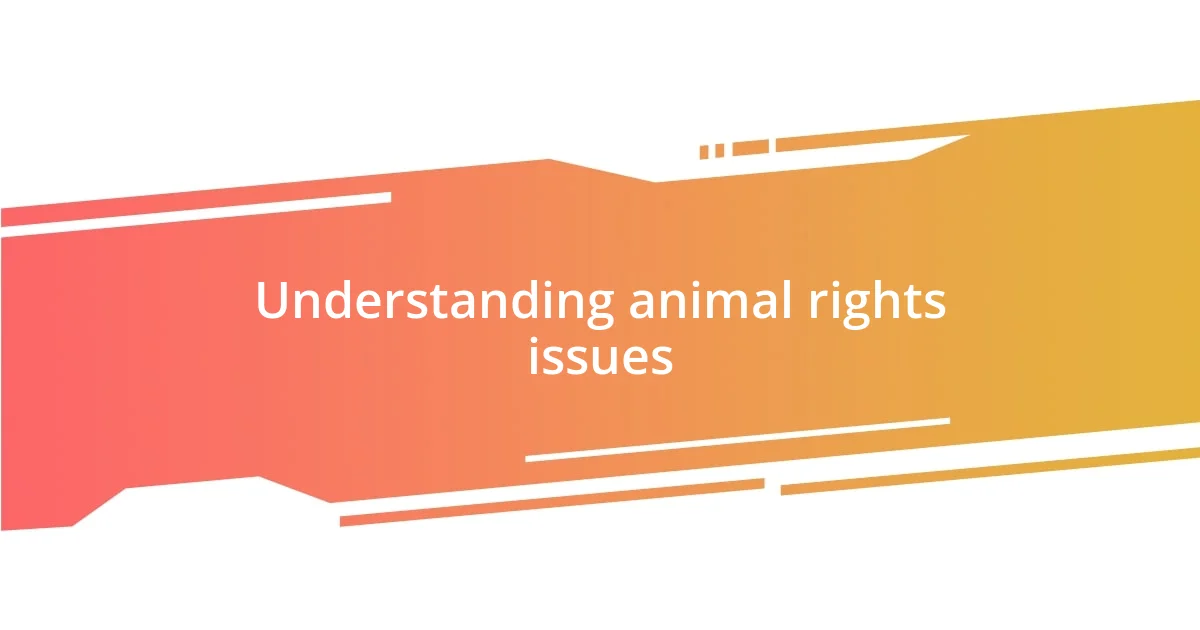
Understanding animal rights issues
Understanding animal rights issues can feel overwhelming, but breaking it down helps clarify the landscape. One of the most pressing concerns is factory farming, where animals endure extreme confinement and inhumane conditions. I once visited a farm that claimed to be “humane,” but witnessing the cramped quarters of the chickens left me questioning how “humane” that really was.
Here are some key issues at the heart of animal rights:
- Factory Farming: Crowded and unsanitary conditions leading to both physical and psychological suffering.
- Animal Testing: Painful experiments for cosmetics and pharmaceuticals, often causing suffering without guaranteed safety for humans.
- Wildlife Exploitation: Habitat destruction and poaching contribute to the decline of species, robbing animals of their homes.
- Entertainment Industry: Wild animals in circuses and zoos often experience trauma from being removed from their natural habitats.
- Neglect and Abuse: Pets and strays suffering from neglect highlight the need for better laws and enforcement.
Understanding these issues empowers me to connect with others. I remember speaking to a friend who adopted a rescue cat; their story opened my eyes to the emotional toll on animals waiting for homes. It’s these conversations that drive change, making it clear that even small actions can lead to a greater awareness of animal rights.
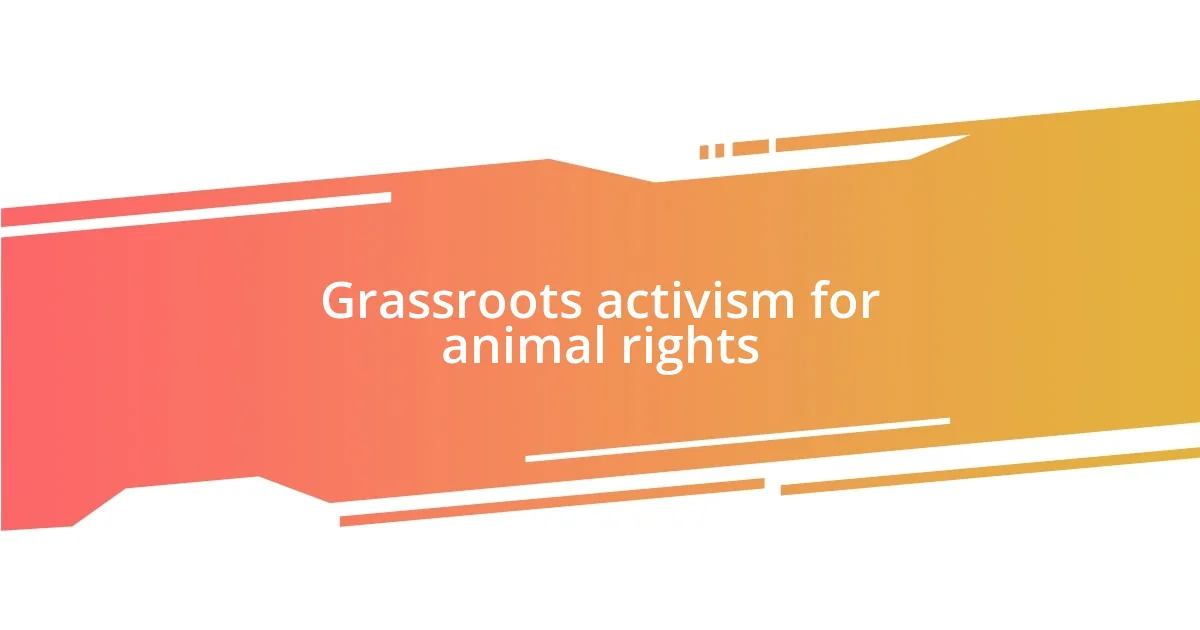
Grassroots activism for animal rights
Grassroots activism for animal rights thrives on community engagement and individual initiatives. I recall an event organized by a group of local activists who set up a booth at a farmer’s market to educate shoppers on the realities of factory farming. Witnessing the curiosity and interest sparked in people’s eyes reminded me of how critical it is to present these issues in relatable ways that resonate with everyday lives. Each conversation contributed to a growing awareness and understanding of animal welfare.
Participating in grassroots movements has been transformative for my personal growth. One memorable experience involved collaborating with a neighborhood group to host a peaceful protest outside a local pet store that sold puppies from commercial breeders. The emotions were palpable; we chanted slogans together, holding signs that demanded humane treatment and adoption over sales. This unity not only fortified my resolve but also demonstrated the power of collective voices creating ripples of change within the community.
The impact of grassroots activism can be profound, often translating into genuine change. I was amazed when our collective efforts led to the store owner re-evaluating his practices and opting to partner with a local animal rescue instead. It’s not just about protests or pamphlets; it’s about forming genuine connections and inspiring others to join the fight for animal rights. Each small victory fuels the fire within me to continue pushing for a larger movement, reminding me that every voice matters.
| Aspect | Grassroots Activism |
|---|---|
| Community Involvement | High |
| Individual Initiatives | Essential |
| Connection with Others | Critical |
| Emotional Impact | Deep and Lasting |
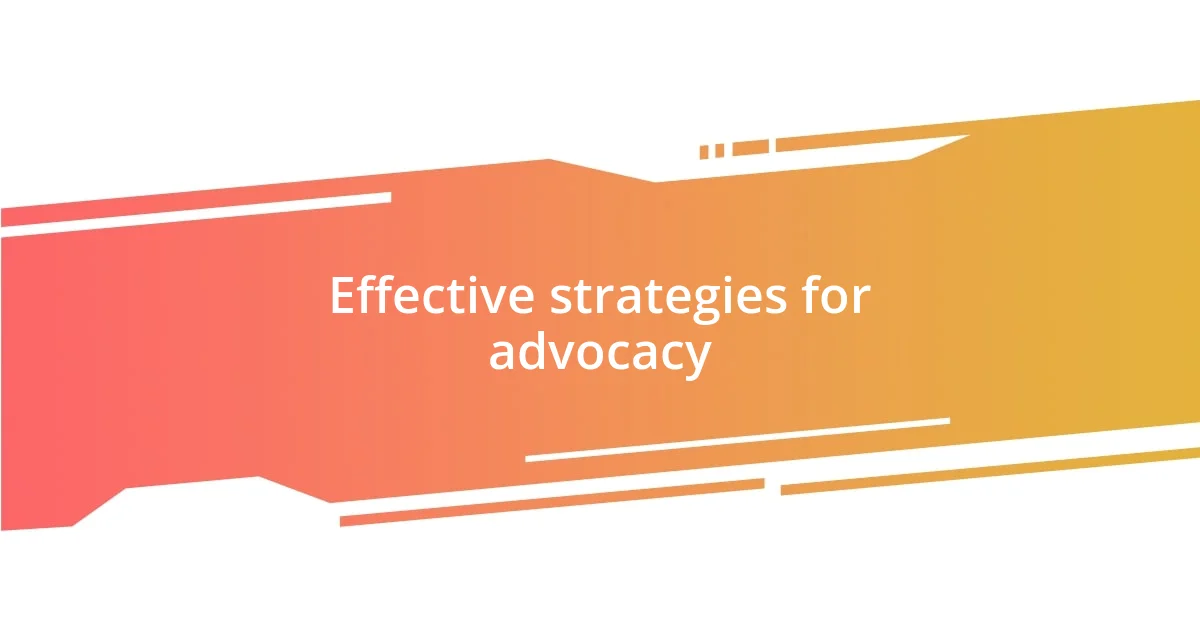
Effective strategies for advocacy
Advocacy for animal rights can take many forms, and one effective strategy I’ve found is storytelling. Sharing personal stories about animal experiences, like the time I fostered a litter of kittens, can evoke empathy and connect people on an emotional level. Don’t you think that when individuals can see the face of an issue, it makes the cause more relatable? By capturing heartfelt moments in my advocacy efforts, I encourage others to take a stand; it’s about making the plight of animals feel personal.
Engaging with local legislators also proves crucial in driving change. I had the opportunity to speak at a town hall meeting about proposed regulations for animal welfare. The conversation sparked such a lively debate that I could see people’s minds shift right before my eyes. It made me realize the importance of being proactive rather than reactive. Have you ever considered how a single conversation can influence legislation? It’s empowering to think that your voice can help shape policies that protect animals, and each small interaction is a vital stepping stone in this process.
Lastly, leveraging social media has become an invaluable tool for raising awareness and rallying support. I often post informative content about animal rights issues, sharing articles and personal insights that encourage discussion within my network. One post in particular led to a significant increase in engagement, with many friends sharing their own stories about rescued animals. Isn’t it gratifying to see your words inspire others? Social media acts as a powerful amplifier, spreading messages far beyond individual circles, which is essential to widen the reach of animal rights advocacy.
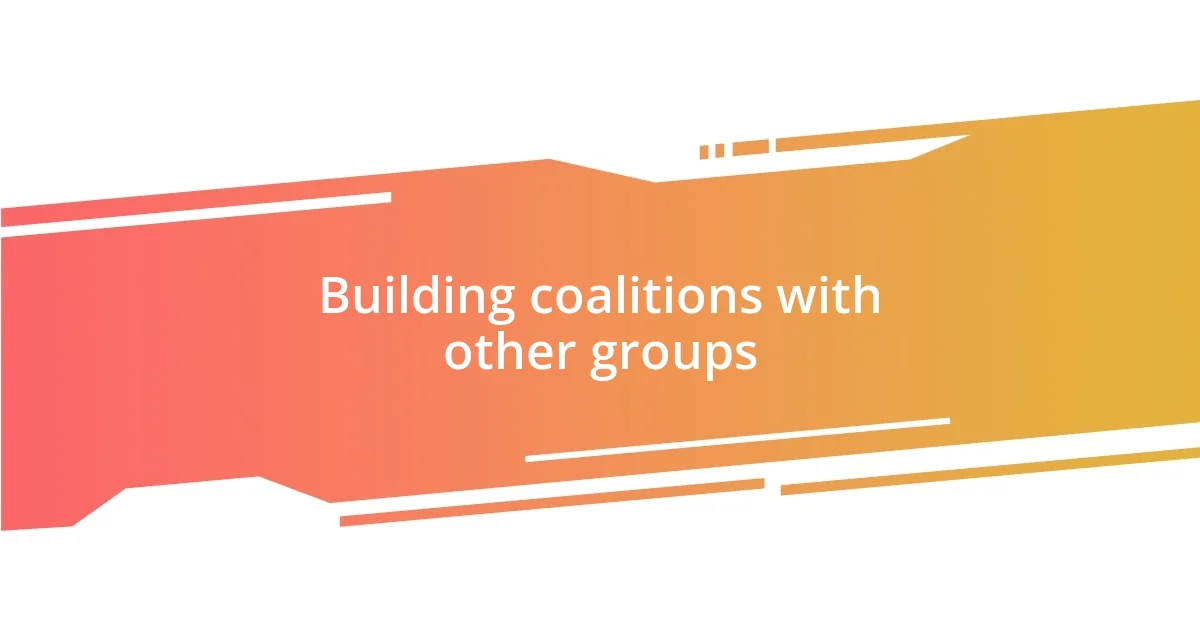
Building coalitions with other groups
Building coalitions with other groups has been one of the most impactful strategies I’ve implemented in my fight for animal rights. I remember attending a conference where various advocacy organizations came together, sharing their experiences and knowledge. It struck me how much we could accomplish by collaborating rather than competing. By pooling our resources, we not only broadened our reach but also strengthened our voices against practices that harm animals. Have you ever thought about how collective action can lead to greater change than individual efforts?
I also found great success when partnering with environmental groups. At one event, I shared my story about the detrimental effects of factory farming on both animals and the planet. Observing environmentalists nodding in agreement made me realize that our causes are often interconnected. It’s enlightening to see how issues like habitat destruction and animal suffering go hand-in-hand. This synergy sparked meaningful discussions, driving home the point that when we unite across causes, everyone benefits—especially the animals.
Moreover, I engaged with local business owners who shared our passion for animal welfare. One café owner allowed me to host an informational evening about adopting pets from shelters rather than buying from breeders. The community turnout was beyond anything I expected, and seeing people intrigued by the possibilities made my heart swell. Isn’t it amazing how bridging gaps between different groups can create a dialogue that brings new allies to our cause? Building these coalitions not only amplifies our message but also fosters a sense of community invested in protecting those who cannot speak for themselves.
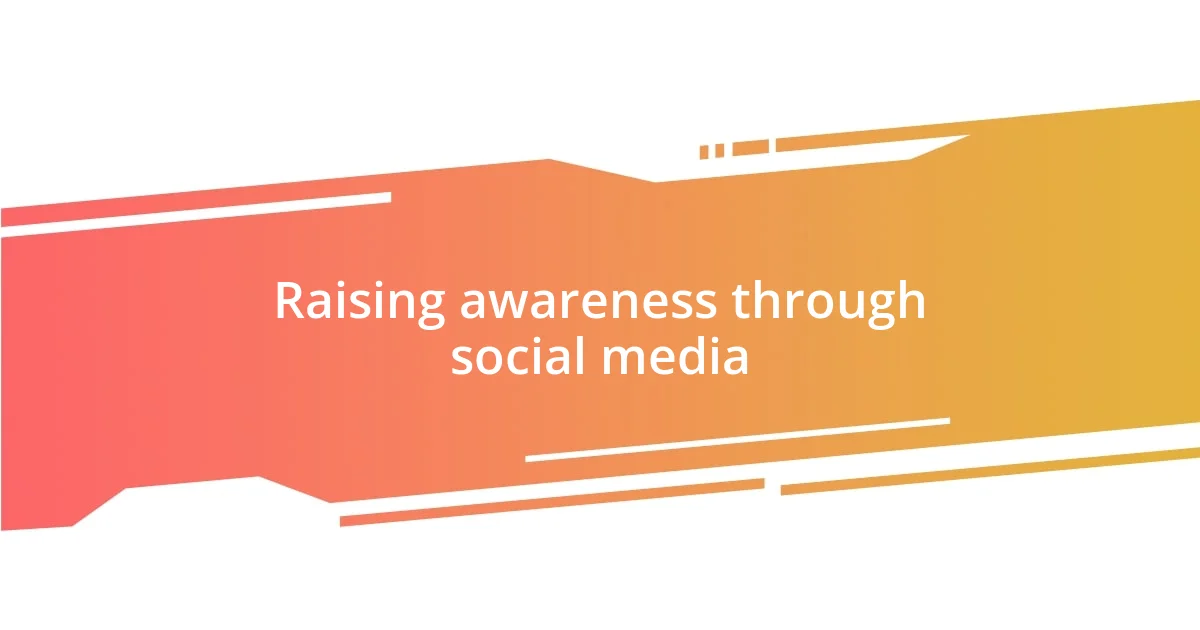
Raising awareness through social media
When it comes to raising awareness through social media, I can’t help but think of the first time I shared a video about animal cruelty. I was astonished by how quickly my post went viral. Friends I hadn’t spoken to in years began commenting and sharing. It was a reminder that one person’s voice can ignite a ripple effect. Don’t you find it incredible how a simple post can lead to such widespread discussions?
Another strategy I’ve embraced is utilizing visuals to capture attention. For instance, I created an infographic that outlined the stark realities of puppy mills—complete with statistics and heartbreaking images. The response was overwhelming. People started sharing it across their platforms, helping educate others in ways I could never do alone. I still remember the tangible shift in conversations around me after that; it’s as if people couldn’t turn a blind eye anymore. How often do visuals make you stop and think about a cause?
Moreover, I’ve discovered that personal engagement is critical. I often host live Q&A sessions on my social media accounts, inviting followers to ask anything about animal rights. During one session, a young woman shared her journey of rescuing an abandoned dog, and the heartfelt exchange that followed solidified a community of like-minded advocates. Isn’t it amazing how these genuine connections fuel our collective passion? Social media isn’t just a tool for information; it’s a platform for building relationships and nurturing a shared commitment to animal welfare.



